Three-dimensional chromatin landscapes in T cell acute lymphoblastic leukemia
- PMID: 32203470
- PMCID: PMC7138649
- DOI: 10.1038/s41588-020-0602-9
Three-dimensional chromatin landscapes in T cell acute lymphoblastic leukemia
Abstract
Differences in three-dimensional (3D) chromatin architecture can influence the integrity of topologically associating domains (TADs) and rewire specific enhancer-promoter interactions, impacting gene expression and leading to human disease. Here we investigate the 3D chromatin architecture in T cell acute lymphoblastic leukemia (T-ALL) by using primary human leukemia specimens and examine the dynamic responses of this architecture to pharmacological agents. Systematic integration of matched in situ Hi-C, RNA-seq and CTCF ChIP-seq datasets revealed widespread differences in intra-TAD chromatin interactions and TAD boundary insulation in T-ALL. Our studies identify and focus on a TAD 'fusion' event associated with absence of CTCF-mediated insulation, enabling direct interactions between the MYC promoter and a distal super-enhancer. Moreover, our data also demonstrate that small-molecule inhibitors targeting either oncogenic signal transduction or epigenetic regulation can alter specific 3D interactions found in leukemia. Overall, our study highlights the impact, complexity and dynamic nature of 3D chromatin architecture in human acute leukemia.
Conflict of interest statement
A.T. is a Scientific Advisor to Intelligencia.AI. All other authors declare that they have no competing financial interests.
Figures
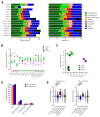
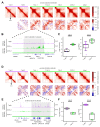
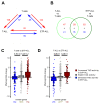




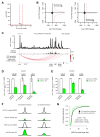
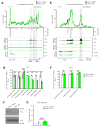
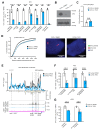
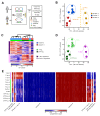
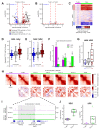
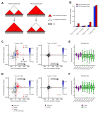
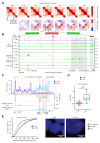
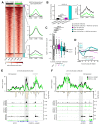
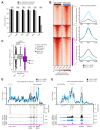
Similar articles
-
Alteration of CTCF-associated chromatin neighborhood inhibits TAL1-driven oncogenic transcription program and leukemogenesis.Nucleic Acids Res. 2020 Apr 6;48(6):3119-3133. doi: 10.1093/nar/gkaa098. Nucleic Acids Res. 2020. PMID: 32086528 Free PMC article.
-
Acute depletion of CTCF directly affects MYC regulation through loss of enhancer-promoter looping.Nucleic Acids Res. 2019 Jul 26;47(13):6699-6713. doi: 10.1093/nar/gkz462. Nucleic Acids Res. 2019. PMID: 31127282 Free PMC article.
-
Aberrant TAL1 activation is mediated by an interchromosomal interaction in human T-cell acute lymphoblastic leukemia.Leukemia. 2014 Feb;28(2):349-61. doi: 10.1038/leu.2013.158. Epub 2013 May 23. Leukemia. 2014. PMID: 23698277 Free PMC article.
-
Pushing the TAD boundary: Decoding insulator codes of clustered CTCF sites in 3D genomes.Bioessays. 2024 Oct;46(10):e2400121. doi: 10.1002/bies.202400121. Epub 2024 Aug 21. Bioessays. 2024. PMID: 39169755 Review.
-
Many facades of CTCF unified by its coding for three-dimensional genome architecture.J Genet Genomics. 2020 Aug;47(8):407-424. doi: 10.1016/j.jgg.2020.06.008. Epub 2020 Sep 1. J Genet Genomics. 2020. PMID: 33187878 Review.
Cited by
-
Large-Scale Topological Changes Restrain Malignant Progression in Colorectal Cancer.Cell. 2020 Sep 17;182(6):1474-1489.e23. doi: 10.1016/j.cell.2020.07.030. Epub 2020 Aug 24. Cell. 2020. PMID: 32841603 Free PMC article.
-
Superenhancers as master gene regulators and novel therapeutic targets in brain tumors.Exp Mol Med. 2023 Feb;55(2):290-303. doi: 10.1038/s12276-023-00934-0. Epub 2023 Feb 1. Exp Mol Med. 2023. PMID: 36720920 Free PMC article. Review.
-
An Epigenetic Perspective on Intra-Tumour Heterogeneity: Novel Insights and New Challenges from Multiple Fields.Cancers (Basel). 2021 Oct 3;13(19):4969. doi: 10.3390/cancers13194969. Cancers (Basel). 2021. PMID: 34638453 Free PMC article. Review.
-
Multidimensional scaling methods can reconstruct genomic DNA loops using Hi-C data properties.PLoS One. 2023 Aug 17;18(8):e0289651. doi: 10.1371/journal.pone.0289651. eCollection 2023. PLoS One. 2023. PMID: 37590265 Free PMC article.
-
Probabilistic association of differentially expressed genes with cis-regulatory elements.Genome Res. 2024 May 15;34(4):620-632. doi: 10.1101/gr.278598.123. Genome Res. 2024. PMID: 38631728 Free PMC article.
References
-
- Spielmann M, Lupianez DG, Mundlos S. Structural variation in the 3D genome. Nat Rev Genet. 2018 - PubMed
Publication types
MeSH terms
Substances
Grants and funding
- R01 CA133379/CA/NCI NIH HHS/United States
- R01 CA194923/CA/NCI NIH HHS/United States
- R01 CA228135/CA/NCI NIH HHS/United States
- R01 CA149655/CA/NCI NIH HHS/United States
- R01 GM127538/GM/NIGMS NIH HHS/United States
- R01 CA216421/CA/NCI NIH HHS/United States
- R01 CA202025/CA/NCI NIH HHS/United States
- UG1 CA233332/CA/NCI NIH HHS/United States
- U54 CA193419/CA/NCI NIH HHS/United States
- R35 CA220499/CA/NCI NIH HHS/United States
- P01 CA229086/CA/NCI NIH HHS/United States
- P30 CA016087/CA/NCI NIH HHS/United States
- 639784/ERC_/European Research Council/International
- U10 CA180820/CA/NCI NIH HHS/United States
- R00 CA188293/CA/NCI NIH HHS/United States
LinkOut - more resources
Full Text Sources
Molecular Biology Databases

